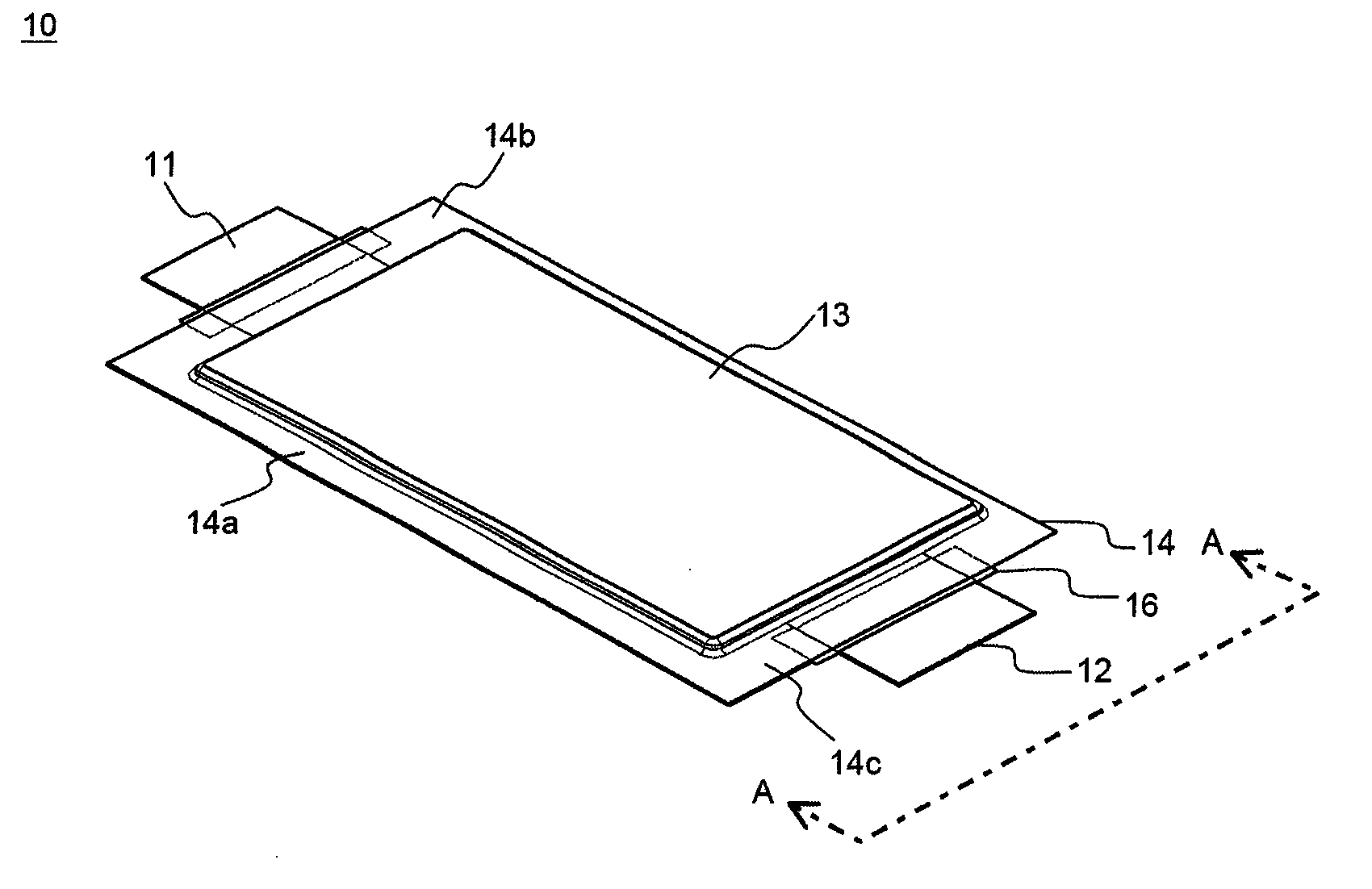Battery cell of improved safety
a battery cell and safety technology, applied in the field of battery cell safety improvement, can solve the problems of low safety increased safety risks of lithium secondary batteries, fire or explosion, etc., and achieve the effects of reducing the penetration of electrolytes, and reducing the risk of fir
- Summary
- Abstract
- Description
- Claims
- Application Information
AI Technical Summary
Benefits of technology
Problems solved by technology
Method used
Image
Examples
example 1
[0064]A mixture including 95 weight percent of LiCoC2, 2.5 weight percent of Super-P (a conducting agent), and 2.5 weight percent of PVdF (a coupling agent), as a cathode active material, was added to NMP (N-methyl-2-pyrrolidone), as a solvent, to manufacture cathode mixture slurry. Also, a mixture including 95 weight percent of artificial graphite, 1 weight percent of Super-P (a conducting agent), and 4 weight percent of PVdF (a coupling agent), as an anode active material, was added to NMP, as a solvent, to manufacture anode mixture slurry. The cathode mixture slurry and the anode mixture slurry were applied to an aluminum foil and a copper foil, respectively, and then the aluminum foil and the copper foil were cut to manufacture cathode plates and anode plates, respectively. The cathode plates and the anode plates were sequentially stacked, while CellGuard™ (TONEN), as separators, was respectively disposed between the cathode plates and the anode plates, to manufacture an electro...
experimental example 1
[0068]Internal pressure increasing experiments were carried out to 30 batteries manufactured according to Example 1 and Comparative examples 1 and 2. The results are indicated in Table 1 below. In the internal pressure increasing experiments, the internal pressure of the respective 30 batteries was increased by 0.1 kgf / mm2 at 30-second intervals using air until wrapping materials of the batteries were vented, and comparison was made between regions where the vent parts were formed.
TABLE 1Number ofNumber ofNumber ofbatteriesbatteriesbatterieshaving ventedhaving ventedhaving vented sideanode leadcathode leadsealing regionssealing regionssealing regionsExample 10300Comparative2730example 1Comparative2919example 2
[0069]As can be seen from Table 1, when the internal pressure increasing experiments were carried out to the 30 batteries manufactured according to Example 1, all of the batteries were uniformly vented at the anode lead sealing regions thereof. Also, the internal pressures of t...
PUM
| Property | Measurement | Unit |
|---|---|---|
| internal pressure | aaaaa | aaaaa |
| flexibility | aaaaa | aaaaa |
| durability | aaaaa | aaaaa |
Abstract
Description
Claims
Application Information
 Login to View More
Login to View More - R&D
- Intellectual Property
- Life Sciences
- Materials
- Tech Scout
- Unparalleled Data Quality
- Higher Quality Content
- 60% Fewer Hallucinations
Browse by: Latest US Patents, China's latest patents, Technical Efficacy Thesaurus, Application Domain, Technology Topic, Popular Technical Reports.
© 2025 PatSnap. All rights reserved.Legal|Privacy policy|Modern Slavery Act Transparency Statement|Sitemap|About US| Contact US: help@patsnap.com



